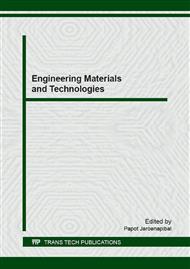p.15
p.21
p.26
p.30
p.36
p.40
p.45
p.51
p.57
A Study on Coconut Shell Powder Filled in Epoxy Resin: A Remedy for Electrical Tree Growth Inhibition
Abstract:
Electrical tree phenomenon is a long term degradation and can be found in solid insulator material. Its phenomenon will degrade the characteristic of insulator and may lead to breakdown. The use of filler in the process of manufacturing for the insulation is very popular method. This paper presents the use of coconut shell powder (CSP) filler in epoxy resin for inhibition of electrical tree growth. The CSP is filled with in ratio of 0.1, 0.3, 0.5, 0.8 and 1.0% by weight. The electrical tree was tested by AC voltage of 15kV and conducted for 30 minutes in this experiment. Experimental results shown that, the pure epoxy resin using as a controlled has tree length of 3.20 mm. While the epoxy resin using CSP filler of 1% by weight has a tree length propagation of 2.10 mm. The shorten length of electrical tree may be affected by the combination of modified permittivity (Ɛ) value of an insulator. Also, this study has shown that the CSP may be a potential candidate as a filler compound to be used as electrical tree inhibition for electrical insulation system.
Info:
Periodical:
Pages:
36-39
Citation:
Online since:
November 2016
Authors:
Keywords:
Price:
Сopyright:
© 2017 Trans Tech Publications Ltd. All Rights Reserved
Share:
Citation:


